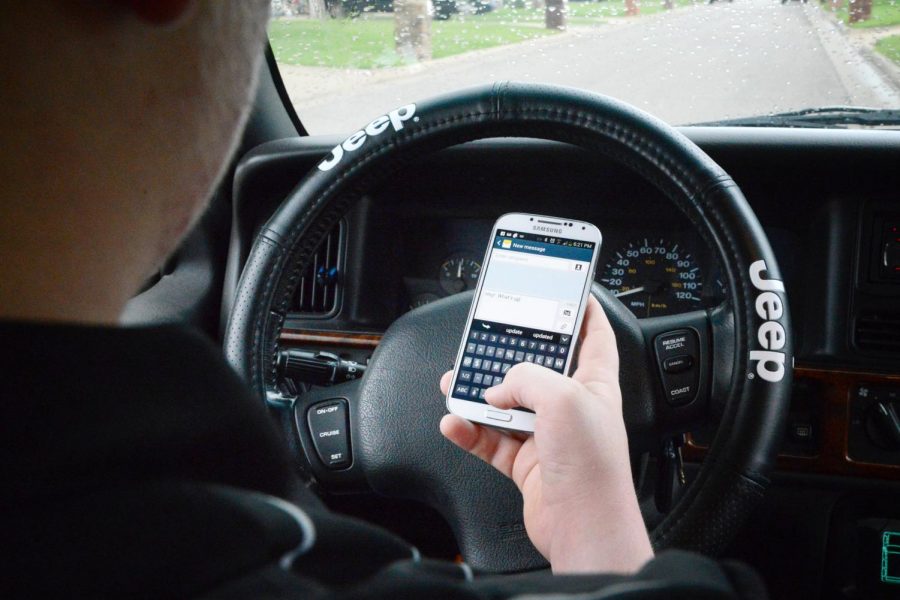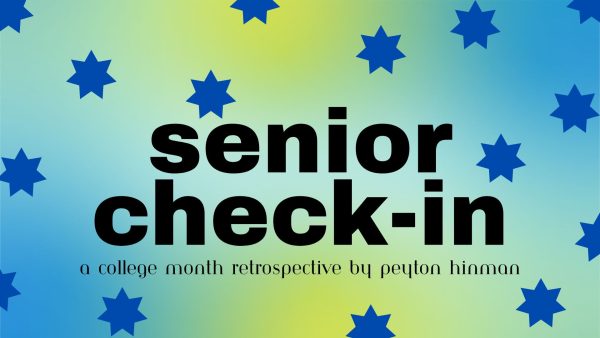Text and drive, pay the price
IMAGE / Ms. Kelly White
Texting and driving causes many accidents.
When stepping into drivers training, it is drilled into the students’ heads that people shouldn’t text and drive.
But there are still many people who rebel against this, especially teens, who are a major component of the death rates of texting and driving.
According to Edgar Snyder and Associates law firm, 21 percent of teen drivers involved in fatal accidents were distracted by their cellphones.
Teens are four times more likely to get into car crashes or near crashes when talking or texting on a cellphone.
Mr. Andy Nester, drivers training instructor, said teens don’t have the capability to multitask behind the wheel.
“Teens are often immature and lack the experience driving to make the connection in their brains that texting could end their driving privileges or worse,” Nester said.
When people text and drive, they may not be aware of their surroundings because the phone takes away the driver’s visual, manual, and cognitive senses.
Chances of getting into a deadly car accident skyrocket when someone is distracted behind the wheel.
According to the National Highway Traffic Safety Administration, 10 percent of fatal crashes, 18 percent of injury crashes, and 16 percent of all police-reported motor vehicle traffic crashes in 2013 were reported as distraction-affected crashes.
Texting while driving has been increasing the number of injuries and deaths.
According to the Centers for Disease Control, “Each day in the United States, approximately nine people are killed and more than 1,000 injured in crashes that are reported to involve a distracted driver.”
When a driver texts while driving, the driver is 23 times more likely to be involved in a car crash than other drivers.
Senior Mallory Simms believes people who text and drive are endangering everyone on the road.
“As a driver myself, it startles me to see people continue to text and drive,” Simms said. “Taking your eyes off the road to check a text puts you, your passengers, and other cars around you in danger.”
The reason why not texting and driving is pushed into students’ heads is because of one teen who did not have the opportunity to change her mistake.
Kelsey Raffaele was a regular girl who made a huge mistake behind the wheel.
Raffaele used her phone while driving and, unfortunately, the result was death.
Mrs. Bonnie Raffaele, Kelsey’s mother, is an advocate for safe driving for teens because of what happened to her daughter.
Bonnie helped push for the enactment of Kelsey’s Law, which bans teenagers from using a cellphone while driving in Michigan.
The fine for breaking Kelsey’s Law is $100 for the first offense.
The amount increases the more offenses the driver has. Multiple offenses may lead the driver to also lose his license.
Sophomore Andrew Woods said being on your phone while driving is not a good idea.
“When you text while driving, you’re disregarding the other passengers, your car’s safety, other drivers and their families’ safety, and your own safety,” Woods said. “It isn’t worth the risks.”
The many fines against texting and driving show how important this issue can be, especially when in one moment you can end someone’s life.

Birthday: Dec. 28, 2002
Hobbies/Interests: Student Council, Pokémon GO.
Favorite Quote: "Let no man pull you low enough to hate him." -...











